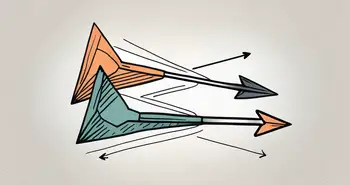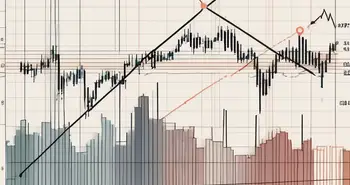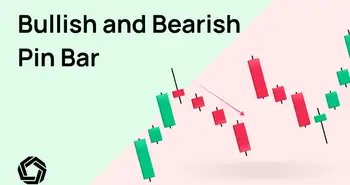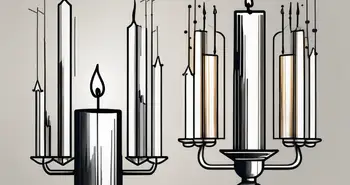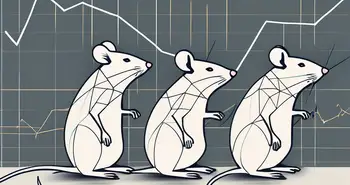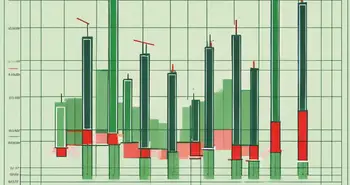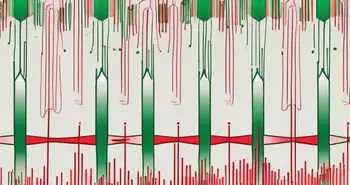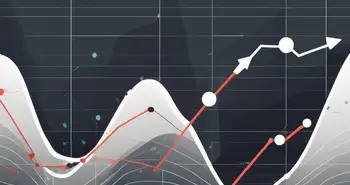Falling Three Methods Pattern
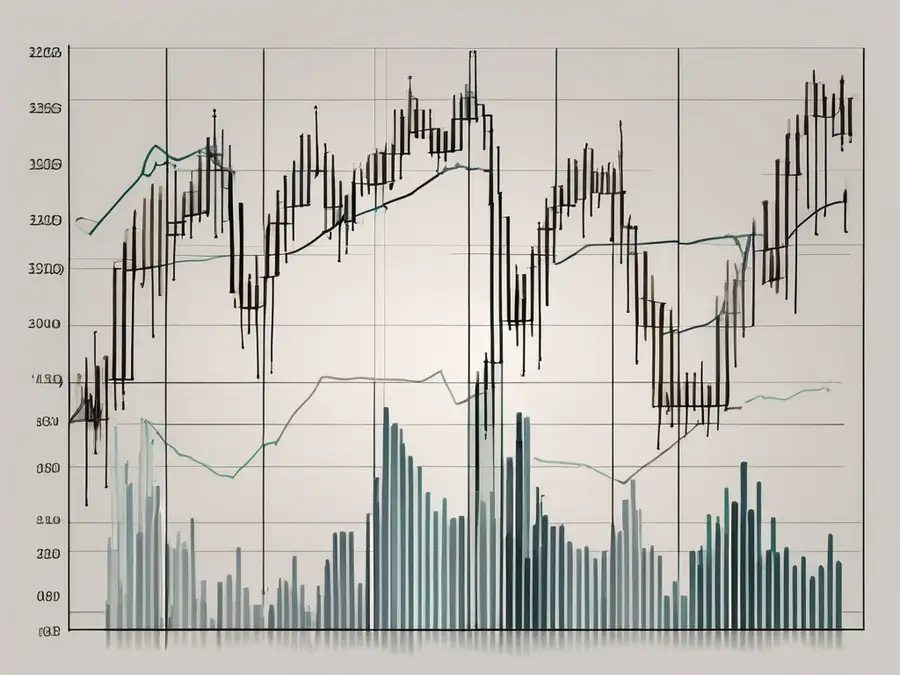
In the world of trading, patterns can often be a valuable tool for predicting market movements. One such pattern that has gained attention among traders is the Falling Three Methods Pattern. In this comprehensive guide, I will take you through everything you need to know about this pattern, from its origins to its significance in technical analysis. So let's dive right in!
Introduction to the Falling Three Methods Pattern
Before we delve into the intricacies of the Falling Three Methods Pattern, let's start with the basics. This pattern is a bearish continuation pattern, typically occurring in a downtrend. It consists of five candlesticks: a long bearish candlestick, followed by three small bullish candlesticks, and finally, another long bearish candlestick. These small bullish candlesticks are often referred to as “rising suns.” Now, let's uncover the fascinating origin and history of this pattern.
Origin and History of the Pattern
The Falling Three Methods Pattern has its roots in the Japanese technique of candlestick charting. Developed in the 18th century, this method garnered popularity due to its ability to provide a visual representation of market trends. Traders found that certain candlestick formations demonstrated consistent patterns, and thus, the Falling Three Methods Pattern was born. Its name comes from the notion that the small bullish candlesticks are trapped within the larger bearish ones, creating a visual representation of a falling price continuation.
The Japanese candlestick charting technique was initially used in the rice market, where traders observed and analyzed the price movements of rice over time. They discovered that specific candlestick patterns often preceded certain market movements, providing valuable insights for trading decisions. Over time, this technique spread to other financial markets, including stocks, commodities, and currencies.
Traders and analysts began to notice that the Falling Three Methods Pattern appeared frequently in downtrends, indicating a potential continuation of the bearish trend. This pattern became a popular tool for technical analysis, helping traders identify potential entry and exit points in their trading strategies.
Basic Concept and Structure
Now that we understand the background, let's examine the basic concept and structure of the Falling Three Methods Pattern. As mentioned earlier, the pattern consists of five candlesticks. The long initial bearish candlestick signifies a strong downtrend. Following this, we have the three rising suns, which indicate a temporary bullish response or consolidation. Finally, the pattern concludes with another long bearish candlestick, reaffirming the continuation of the downtrend. This visual representation offers valuable insights into market trends and can be a key tool for traders.
Each candlestick within the Falling Three Methods Pattern tells a story of market sentiment and price action. The long bearish candlestick at the beginning of the pattern reflects strong selling pressure and a dominant downtrend. It sets the stage for the subsequent three rising suns, which represent a temporary pause or consolidation in the downtrend. During this phase, buyers may step in, causing the price to bounce slightly. However, the overall downtrend remains intact, as indicated by the final long bearish candlestick.
Traders often look for additional confirmation signals when identifying the Falling Three Methods Pattern. They may analyze other technical indicators, such as volume, moving averages, or support and resistance levels, to strengthen their analysis and increase the probability of a successful trade.
Understanding the Falling Three Methods Pattern and its structure can empower traders to make informed decisions based on market trends. By recognizing this bearish continuation pattern, traders can anticipate potential price movements and adjust their trading strategies accordingly.
The Significance of the Falling Three Methods Pattern in Trading
Now that you have a glimpse into the Falling Three Methods Pattern, let's explore its significance in trading. This pattern plays a crucial role in technical analysis, offering valuable insights into market behavior and potential future movements.
The Falling Three Methods Pattern is a specific candlestick pattern that is widely recognized and used by traders. It consists of five candles, with the first one being a long bearish candle, followed by three small bullish candles that are contained within the range of the first candle, and finally, a long bearish candle that closes below the first candle's low. This pattern indicates a temporary pause in a downtrend, suggesting that the selling pressure may continue in the future.
Role in Technical Analysis
Technical analysis is a methodology used by traders to analyze past market data and make predictions about future price movements. The Falling Three Methods Pattern serves as an important signal for traders, indicating the continuation of a downtrend. By recognizing and understanding this pattern, traders can make informed decisions about when to enter or exit trades.
When analyzing the Falling Three Methods Pattern, traders often look for confirmation signals such as a decrease in trading volume during the formation of the pattern. This decrease in volume suggests a lack of buying interest and further supports the bearish outlook. Additionally, traders may use other technical indicators, such as moving averages or trendlines, to strengthen their analysis and increase the probability of a successful trade.
Impact on Market Trends
Market trends are a fundamental aspect of trading, and the Falling Three Methods Pattern provides key insights into these trends. When this pattern forms during a downtrend, it suggests that the selling pressure is likely to continue, providing traders with a clear bearish outlook. This knowledge allows traders to adjust their strategies accordingly, capitalizing on potential profits.
Traders who spot the Falling Three Methods Pattern may choose to enter short positions, anticipating further price declines. They may set stop-loss orders above the pattern's high to manage risk and take profit targets based on support levels or previous price swings. By aligning their trades with the prevailing market trend indicated by this pattern, traders increase their chances of success.
It is important to note that while the Falling Three Methods Pattern can provide valuable insights, it is not infallible. Traders should always consider other factors, such as market conditions, fundamental analysis, and risk management, when making trading decisions. Additionally, it is recommended to practice and test trading strategies using historical data or a demo account before applying them in live trading.
Identifying the Falling Three Methods Pattern
Now that we know the significance of the Falling Three Methods Pattern, let's focus on identifying it accurately. By recognizing the pattern's key characteristics and avoiding common mistakes, you can improve your trading accuracy and decision-making.
Key Characteristics to Look For
When looking for the Falling Three Methods Pattern, there are a few key characteristics to keep in mind. Firstly, the initial bearish candlestick should be significantly longer than the subsequent bullish candlesticks. Secondly, the three rising suns should be relatively small and remain within the range of the initial bearish candlestick. Lastly, the final bearish candlestick should confirm the continuation of the downtrend by closing below the low point of the rising suns. Paying attention to these details will increase the accuracy of your pattern identification.
Common Mistakes in Identification
Identifying patterns requires careful analysis, but it's essential to avoid common mistakes. One common error is mistaking other candlestick patterns for the Falling Three Methods Pattern. Remember, the Falling Three Methods Pattern has its distinct characteristics that differentiate it from other formations. Additionally, improper measurement of the candlestick sizes may lead to inaccuracies in your analysis. Always double-check your measurements to ensure accuracy and avoid false signals.
Interpreting the Falling Three Methods Pattern
Now that you can identify the Falling Three Methods Pattern, let's explore its interpretation and what it signifies for market movements.
What Does a Falling Three Methods Pattern Indicate?
The Falling Three Methods Pattern indicates a continuation of the current downtrend. It suggests that the selling pressure in the market is still dominant and likely to persist. This pattern often occurs as a temporary consolidation before the downtrend resumes. Traders can use this information to plan their trades accordingly and take advantage of potential profit opportunities.
Understanding Bullish and Bearish Scenarios
When interpreting the Falling Three Methods Pattern, it's crucial to consider both bullish and bearish scenarios. In a bearish scenario, the pattern confirms the continuation of the downtrend. Traders can capitalize on this by implementing short-selling strategies or setting up stop-loss orders to protect against adverse price movements. However, it's essential to remain cautious as market conditions can change rapidly. Always monitor the market closely to adjust your strategies accordingly.
Strategies for Trading with the Falling Three Methods Pattern
Now that we have covered the interpretation of the Falling Three Methods Pattern, let's focus on practical strategies for trading with this pattern.
Timing Your Entry and Exit
Timing is crucial in trading, and this holds true when trading with the Falling Three Methods Pattern. One strategy is to enter a trade when the final bearish candlestick closes below the low of the rising suns. This indicates a confirmation of the downtrend continuation. As for exiting a trade, it's wise to use stop-loss orders or set profit targets based on your risk appetite and overall trading strategy.
Risk Management Considerations
Risk management is paramount to successful trading, and it's important to apply this concept when trading with the Falling Three Methods Pattern. Consider implementing proper risk management techniques such as setting stop-loss orders, carefully calculating position sizes, and diversifying your portfolio. These measures can help protect your capital and mitigate potential losses.
Personally, I find the Falling Three Methods Pattern to be an incredibly reliable tool in my trading arsenal. The pattern's clarity and consistency provide valuable insights into market trends and potential profit opportunities. I remember one particular trade where I identified the Falling Three Methods Pattern during a significant downtrend. By entering the trade at the optimal moment, I was able to ride the bearish wave and secure a substantial profit. This reinforced my confidence in the pattern and highlighted its efficacy when applied correctly.
FAQ
1. What is the Falling Three Methods Pattern?
The Falling Three Methods Pattern is a bearish continuation pattern consisting of five candlesticks. It indicates the continuation of a downtrend and is widely used in technical analysis.
2. How do I identify the Falling Three Methods Pattern?
To identify the Falling Three Methods Pattern, look for a long bearish candlestick followed by three small bullish candlesticks, and finally, another long bearish candlestick. Pay attention to the size and positioning of the candlesticks for accurate identification.
3. What does the Falling Three Methods Pattern indicate?
The Falling Three Methods Pattern indicates a continuation of the downtrend. It suggests that the selling pressure in the market is still dominant and likely to persist.
4. What strategies can I use for trading with the Falling Three Methods Pattern?
For trading with the Falling Three Methods Pattern, consider timing your entry and exit based on the confirmation of the pattern. Implement risk management techniques such as setting stop-loss orders and diversifying your portfolio to protect against adverse price movements.
Now that you have a comprehensive understanding of the Falling Three Methods Pattern, it's time to apply this knowledge to your trading journey. Remember to remain diligent in analyzing the pattern's characteristics, interpret it accurately, and implement effective strategies. With practice, you can leverage this pattern to make informed trading decisions and potentially enhance your trading success.
Ready to put your newfound knowledge of the Falling Three Methods Pattern into action? Look no further than Morpher, the revolutionary trading platform that empowers you with zero fees, infinite liquidity, and the flexibility of fractional investing. Whether you're looking to profit from downtrends with short selling or amplify your trades with up to 10x leverage, Morpher offers a unique trading experience tailored for the modern investor. Embrace the future of trading with the safety and control of the Morpher Wallet. Sign Up and Get Your Free Sign Up Bonus today, and start trading across a multitude of asset classes on a platform that's as innovative as your trading strategy.

Disclaimer: All investments involve risk, and the past performance of a security, industry, sector, market, financial product, trading strategy, or individual’s trading does not guarantee future results or returns. Investors are fully responsible for any investment decisions they make. Such decisions should be based solely on an evaluation of their financial circumstances, investment objectives, risk tolerance, and liquidity needs. This post does not constitute investment advice.

Painless trading for everyone
Hundreds of markets all in one place - Apple, Bitcoin, Gold, Watches, NFTs, Sneakers and so much more.

Painless trading for everyone
Hundreds of markets all in one place - Apple, Bitcoin, Gold, Watches, NFTs, Sneakers and so much more.

